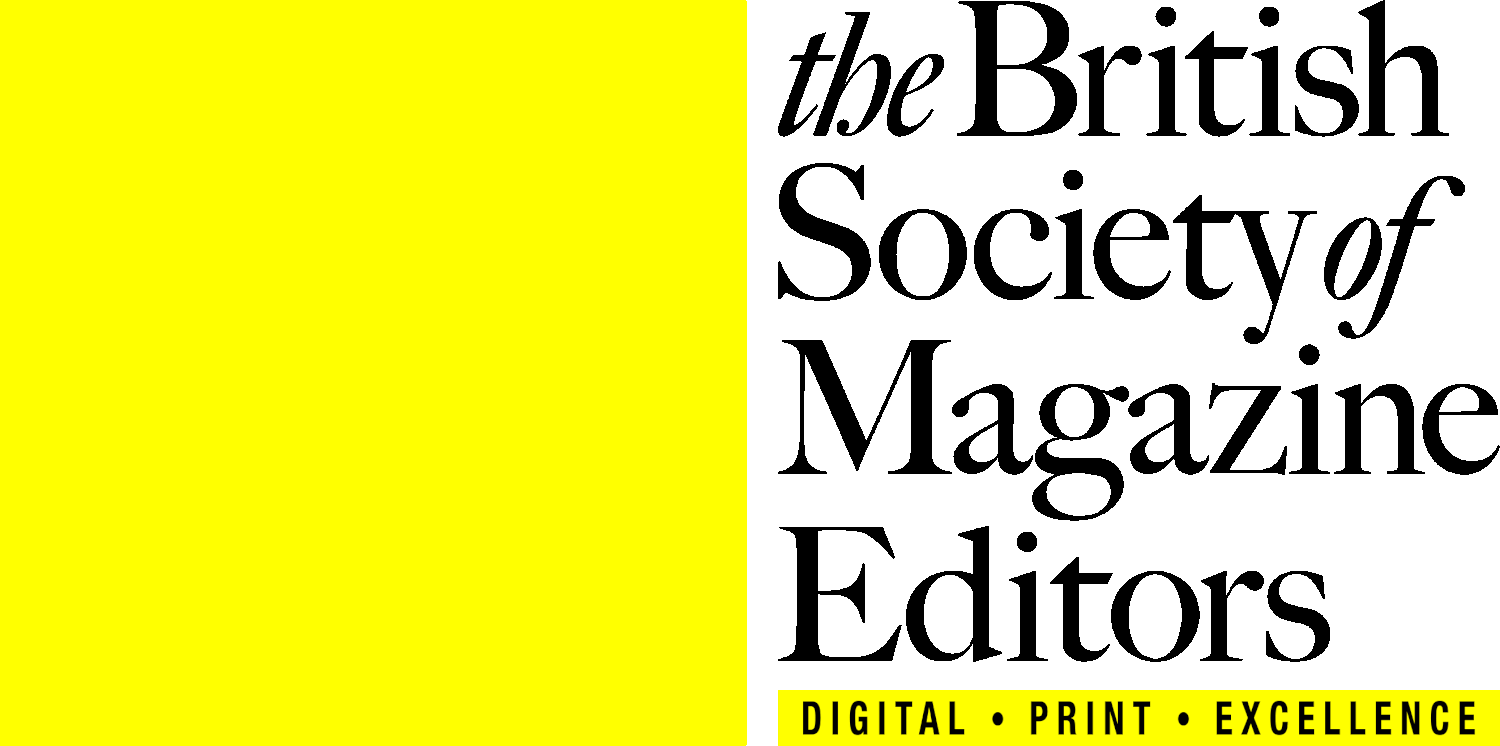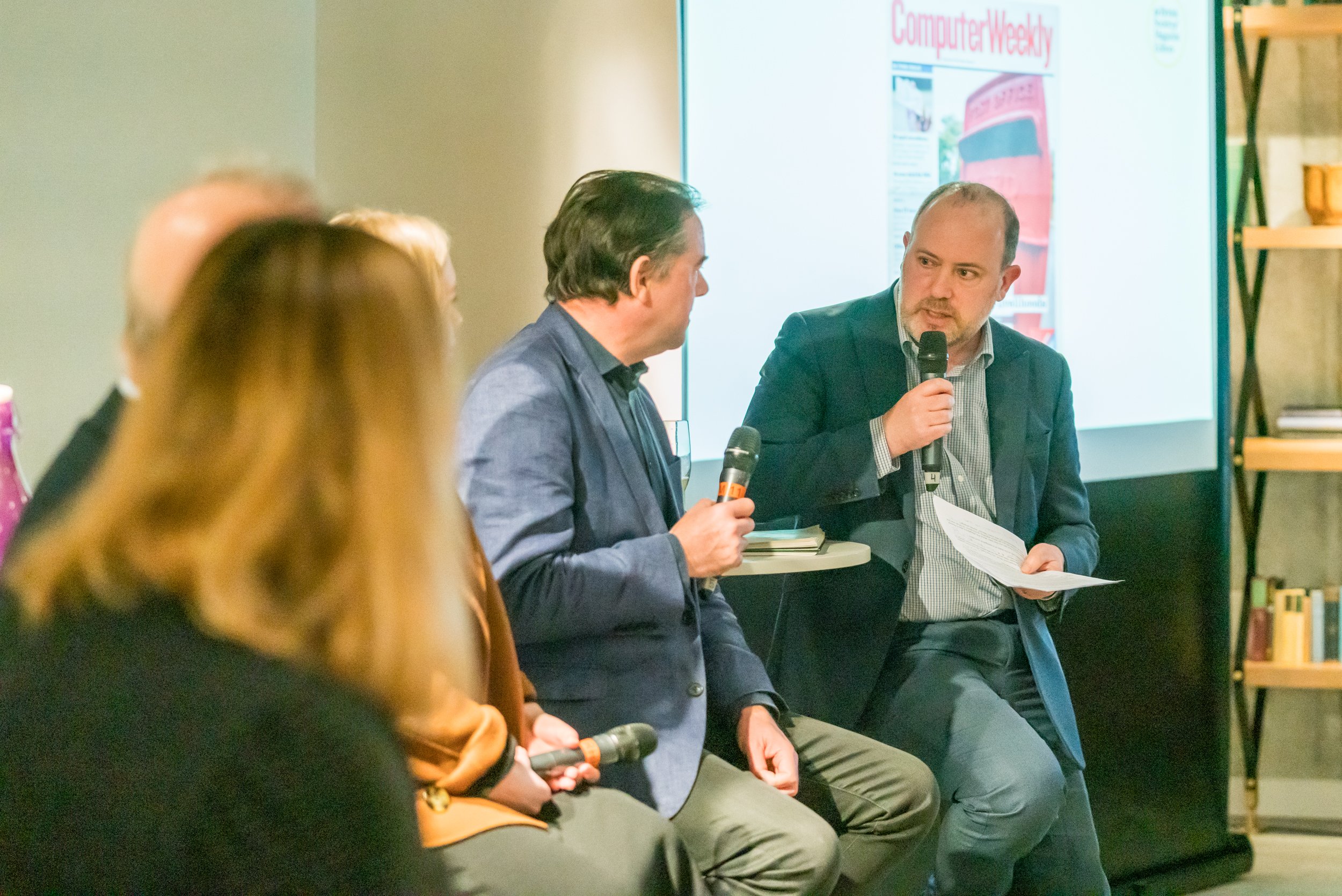Thank you to everyone who joined us for our second event of the year last week, with a special thanks to the Bankside Hotel, Autograph Collection for hosting us and providing a fantastic setting for an energising discussion.
The event brought together a diverse audience of journalists, editors and industry professionals to delve into the profound impact of investigative journalism in uncovering one of the worst miscarriages of justice in British legal history, the Post Office scandal.
Ian Hislop, Rosamund Urwin, Gideon Spanier, Rebecca Thomson, Bryan Glick
Our panel, hosted by BSME chair Gideon Spanier, featured insights from Rebecca Thomson, journalist and former Computer Weekly reporter, who broke the first story about the Post Office scandal; Bryan Glick, editor-in-chief of Computer Weekly; Ian Hislop, editor of Private Eye; and Rosamund Urwin, media editor of the Sunday Times.
The discussion ranged widely, exploring how magazines provide a perfect platform for investigative journalism, why it took an ITV drama to catapult the scandal to the top of the news agenda, and wider implications and challenges of investigative reporting, such as legal threats and misinformation.
Takeaways
We can repeat the same story! There was a lot of talk around editor fatigue with a story. Rosamund made the funny point that she has had editors who had been pitched a story on Tuesday and got bored of it by Friday – before it was even published! Ian made the point that unlike newspapers, we as magazine editors – and especially us specialist mags – should not be afraid to repeat a story all the time. This is what Computer Weekly did. Our readers don’t remember stories that well, and it is on us to get them to associate the story with us. (Obviously, it can’t be a copy and paste job! But we should lower the threshold of what is new…)
Investigations might not be traffic drivers… but they bring a lot of value. People are more likely to read news stories, even those from press releases, but the deeper investigative stuff brings more value to the publication overall. Readers won’t tend to recall the strong one-off news stories you broke, or the consistent strong news output. But they do remember the big set pieces you did (in Pulse’s case Lost Practices, Arvind Madan and sexism in the BMA). There are exceptions – the Russell Brand investigation was the biggest read story on the Times website, and led to record sales. But this shouldn’t be the only metric.
Don’t always take the public body at its word. When we do get someone contacting us and we put their concerns to the public body, they are not always truthful – they will try and kill the story if there are only the odd examples. This is what happened with the PO – every postmaster was told they were the only one where discrepancies were found.
Journalists are not counsellors! Nor advocates, nor solicitors. Our role is important in reporting the story, but this is all. This is a really important point. It is not our job to make lives better for the people affected. This might happen as a consequence of our reports, but we are not campaigners on their behalf (unless we choose to run a campaign). When speaking to case studies, be clear what you can and can’t do. Providing publicity for their case can be positive for them, but that is a consequence of what we do, not the aim.
We shouldn’t be afraid to collaborate. Especially for small magazines, we may not have the expertise within the team for certain parts of investigations (checking the financial aspects, etc), Therefore, when we do feel there is an investigation worth doing, we shouldn’t be afraid to approach other organisations, The best investigations tend to involve collaboration – Russell Brand was between the ST and Dispatches, and even the PO scandal gained traction only after it was on TV
Written by Jaimie Kaffash, editor of Pulse
Photos
Photography by David Cotter
In partnership with Bankside Hotel, Autograph Collection.
Podcast
Click on the icon below to listen to the recording of the discussion.
















































